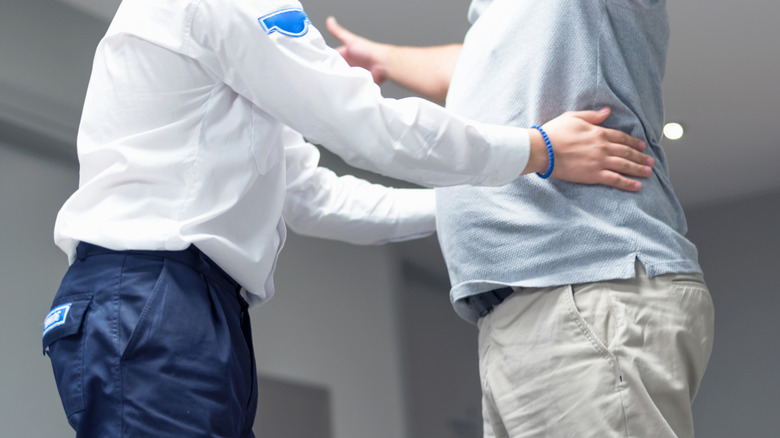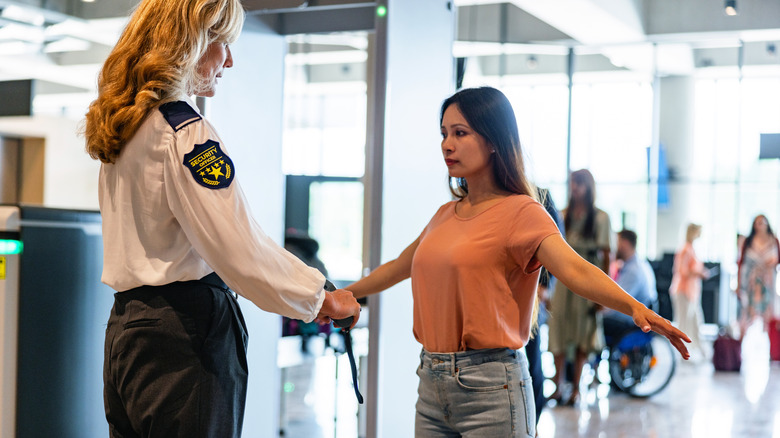What Happens If You Refuse A TSA Pat-Down?
Getting through airport security is one of the least enjoyable parts of going on vacation. Even if you've carefully packed your liquids and removed your jacket long before entering the security line, the process can still be stressful to navigate.
Pat-downs can make security screenings especially dreadful. According to the Transportation Security Administration (TSA), manual body searches are used when body scanners detect a concerning object, as an alternative to the scanning machines and metal detectors, and during random additional airport screening. In other words, anyone can be made to participate, and you might not always know why you've been selected.
While pat-downs are meant to bolster security, some might find that the practice encroaches on their personal space and is a little too intimate for comfort. TSA's frisking guidelines allow agents to apply pressure to sensitive areas and reach their hands inside some clothing items (such as inside the waistband of the flier's pants). Unfortunately, once you've been selected for a pat-down, there aren't many ways around the physical inspection.
If you refuse a pat-down, you may not be allowed to fly
When strolling through security, you're allowed to opt out of using TSA body scanners, but the same can't be said of manual pat-down screenings. A pat-down is one part of going through TSA that you can't refuse, regardless of your personal beliefs or comfort level.
Arli Christian, an ACLU campaign strategist and attorney, confirmed this to The Washington Post, saying, "Unfortunately, there is no clear way to opt out of pat down screenings if you trigger one of the AIT alarms or metal detector alarms." Lisa Farbstein, a spokesperson for TSA, also told the media outlet that travelers can't simply remove the item that triggered the alarm to avoid being manually inspected.
Once you've been instructed to receive a pat-down, your only option is to comply. If you refuse, expect to be barred from entering the airport terminal and prevented from boarding your flight.
How to protect yourself during a pat-down
While TSA has the right to require travelers to participate in pat-downs, you also have personal rights. Knowing what you're entitled to and how a pat-down should go can help you protect yourself.
First, your pat-down should be completed by a TSA agent of the same gender, and the agent should clearly explain the procedure before starting. Inform the security officer of any disabilities, mobility limitations, or painful areas — the TSA employee should carry out the screening without hurting any part of the body. Additionally, you have the right to request a private screening away from the security line. During a private pat-down, a second officer of the same gender will join, and you can ask to have a friend or witness accompany you.
If you believe a TSA agent was too rough or invasive during the screening, you can file a complaint on the TSA website. Try to record the agent's name, along with the location and approximate time, to include in your submission. If you don't receive a response, follow up with the agency's TSA Cares department with details of your experience.

